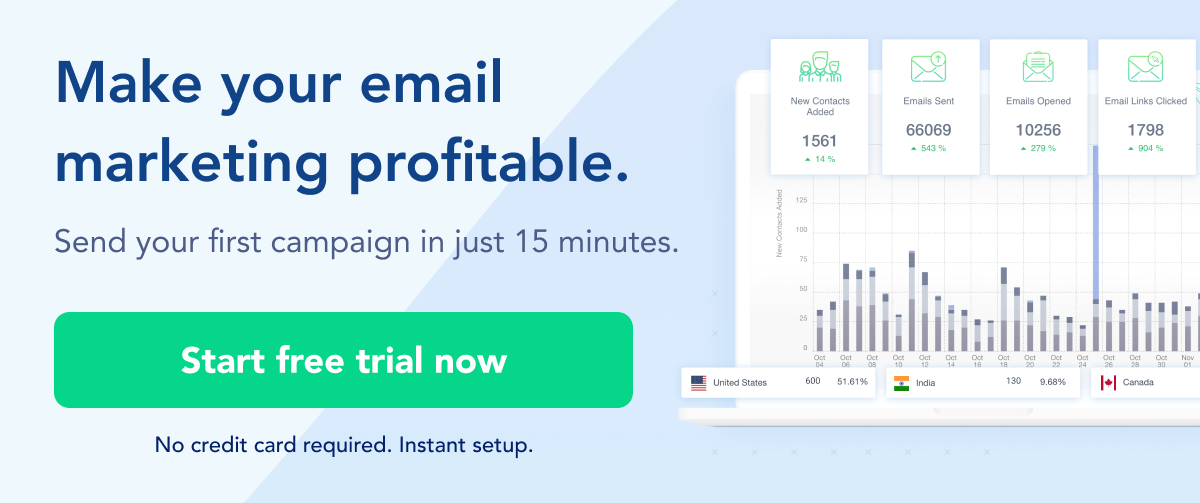Many ambitious business owners will have at least one eye on international expansion, aiming to reach new consumers, diversify their income streams, and build a truly global brand. If your business is one of them — or if you’re already operating in more than one global market — then you’ll of course need to develop an international marketing strategy.
Part of that strategy is multilingual email marketing. Naturally, this requires your email campaigns to be translated into multiple languages to enable you to reach as many global consumers as possible — and to engage them with relevant, personalized content. An AI writer has the potential to greatly impact by generating engaging email content through their ability to analyze vast amounts of data and adapt to individual preferences.
But surely it’s just as straightforward as translating your email copy into several languages, no? You may think so, but there’s a little more to it than that: to really nail multilingual email marketing, it’s about knowing your audience and localizing your content for each region.
Let’s delve into the most effective ways to build a successful multilingual email marketing strategy.
Know your Audience(s)
It goes without saying that the first step to marketing to multilingual consumers is having a good idea of who exactly your international audiences are. It’s an important part of any marketing strategy — whether your email marketing campaigns run locally or internationally — but it’s especially important when you’re marketing outside of your own locale because there are additional factors to consider such as cultural differences, consumer preferences, and market trends. You can carry out international audience research in a number of ways:
- Performing analysis of potential competitors already operating in the country — how do they market to their audience? What type of language do they use?
- Talking to international consumers, for instance, by using a free online survey — what are they motivated by? What do they value? Do they have any frustrations or gripes?
- Performing ‘social listening’ (monitoring and analyzing social media channels in the country) to gauge consumer sentiment.
- Conducting secondary market research (analyzing reports, white papers, case studies etc.) for economic and market insights.
All that said, it’s difficult to really understand the intricacies of a culture unless you have someone “on the ground”, so to speak — someone who lives there, or at the very least speaks the language. Fortunately many of us are now working remotely, which means it’s theoretically possible to recruit talent from anywhere in the world without them leaving their own country. If you’re looking for some temporary international expertise to support with the launch of a new global campaign, for example, a service like the contractor management service by Remote enables you to hire and pay international contractors with ease.
Focus On Segmentation
When it comes to multilingual emails, segmentation and targeting are key. This is what will enable you to ensure your content reaches the right people in the right language. It’s also crucial to building engagement, because it allows you to tweak and tailor your messaging to specific audiences for a more personalized experience — and that’s important, because 71% of consumers expect brands to deliver exactly that.
Fortunately, most email marketing tools will enable you to segment your audience in a multitude of ways. Therefore, you can divide your subscribers into specific groups based on language — you could bucket all the Spanish-speaking countries together, for instance — or get more specific and separate them by country or region. The second option is probably preferable in most cases, since it allows you to localize your content as well as ensuring it’s in the right language (more on that very shortly).
By segmenting your subscriber lists by region or language, you can then use conditional logic to determine which campaigns to send them and when (timing is also key; think about time differences, national holidays etc.). Of course, you can get even more creative with segmentation to really maximize engagement — for example, by separating your subscribers by demographic, interests, or their past purchases, and then sending them highly personalized content that has a higher chance of converting.
Localize your Content
Segmenting your audience geographically is one thing, but the next step is ensuring that the content you serve each group in your marketing emails is relevant. That’s done through localization. It’s no good sending an email campaign to your subscribers in India telling them about a flagship product you’re about to launch in the US, because it’s neither relevant nor particularly helpful. Your international audience will quickly reach for the unsubscribe button if they’re continually presented with content which is not locally-applicable.
A localization tool such as Lokalise is great for this, enabling you to ensure not just your marketing emails but your web pages, blogs, and mobile apps provide local experiences in local languages. Naturally, this also comes back to knowing your audience. Don’t make the mistake of simply assuming you know what will work for overseas email subscribers, but be prepared to do some thorough research first. Not sure what will resonate with an international audience? A/B test one or more options and analyze the results.
Of course, you should also ensure your content is culturally-relevant — and perhaps more importantly, culturally-appropriate. Adding a little humor or irony to your email copy can be a great way to capture attention and boost engagement, but be aware that humor doesn’t always travel well: an amusing reference might land well in English-speaking countries, for example, but people in other cultures might not get the joke. Worse still, you risk offending your international audience if your attempt at banter comes across as culturally-insensitive.
Don’t Rely On Translation Alone
A quick Google of “marketing translation fails” will unearth several examples of marketing campaigns that didn't quite translate seamlessly from one language to another. Back in the late 1980s, for instance, KFC got off on the wrong foot (or should that be finger) when opening its first restaurant in Beijing, China, translating its famous “finger-lickin’ good” slogan into something entirely more sinister: “Eat your fingers off”. No thanks.
Similarly, when Parker expanded their range of fountain pens to Mexico, they failed to realize that while the English word “embarrass” and the Spanish word “embaraza” look similar, they have very different meanings. Thus, instead of assuring Mexican consumers that their pens “won’t leak in your pocket and embarrass you”, they instead told them, “it won’t leak in your pocket and make you pregnant.” You’d certainly hope not.
The lesson? Often, a phrase in one language will not convert directly into another, so simply translating it from English to Spanish, for example, will not necessarily preserve the original meaning. Before running your email copy through Google translate, then, ensure it means the same thing in the other language. Languages are complex and nuanced, so you should tailor your copy to each country — this is another argument for recruiting local experts who know the language — rather than simply relying on your translations holding up.
Analyze and Optimize
Within any marketing strategy, there’s always an opportunity to learn, adapt, and evolve. Trends come and go, consumer motivations shift, and technology advances, meaning there’s rarely a definitive answer — at least, not one which everyone can agree on — when it comes to your approach to email marketing. International email marketing is no different, and in fact, analysis is probably more important here because ever-evolving global trends can be hard to stay abreast of.
By analyzing metrics such as open rates, click-throughs, unsubscribes, and so on, you can recognize when a change of approach might be needed in a particular region. Have your open rates taken a sudden dive in the UK, for example? Well, it could be that you’re advertising luxury spa breaks when the country is experiencing a cost-of-living crisis, or that you’re promoting a product that has recently received some negative national press coverage.
Either way, using analytics tools to glean these types of insights — most email marketing tools have these analytics built-in, while you can sign up for a supplementary email analytics tool like Email Meter if you use a platform such as Gmail — enables you to recognize potential market shifts and alter your approach accordingly, ensuring your email campaigns are always optimized for their intended audience.
Multilingual email marketing isn’t easy to master, but getting it right means you can connect with and engage users all over the world. Just remember, it’s important to know who your international consumers are by performing thorough research, segment your campaigns to specific global audiences, localize your content to ensure cultural relevance, and avoid relying on translation alone. Oh, and remember to analyze, analyze, analyze.



